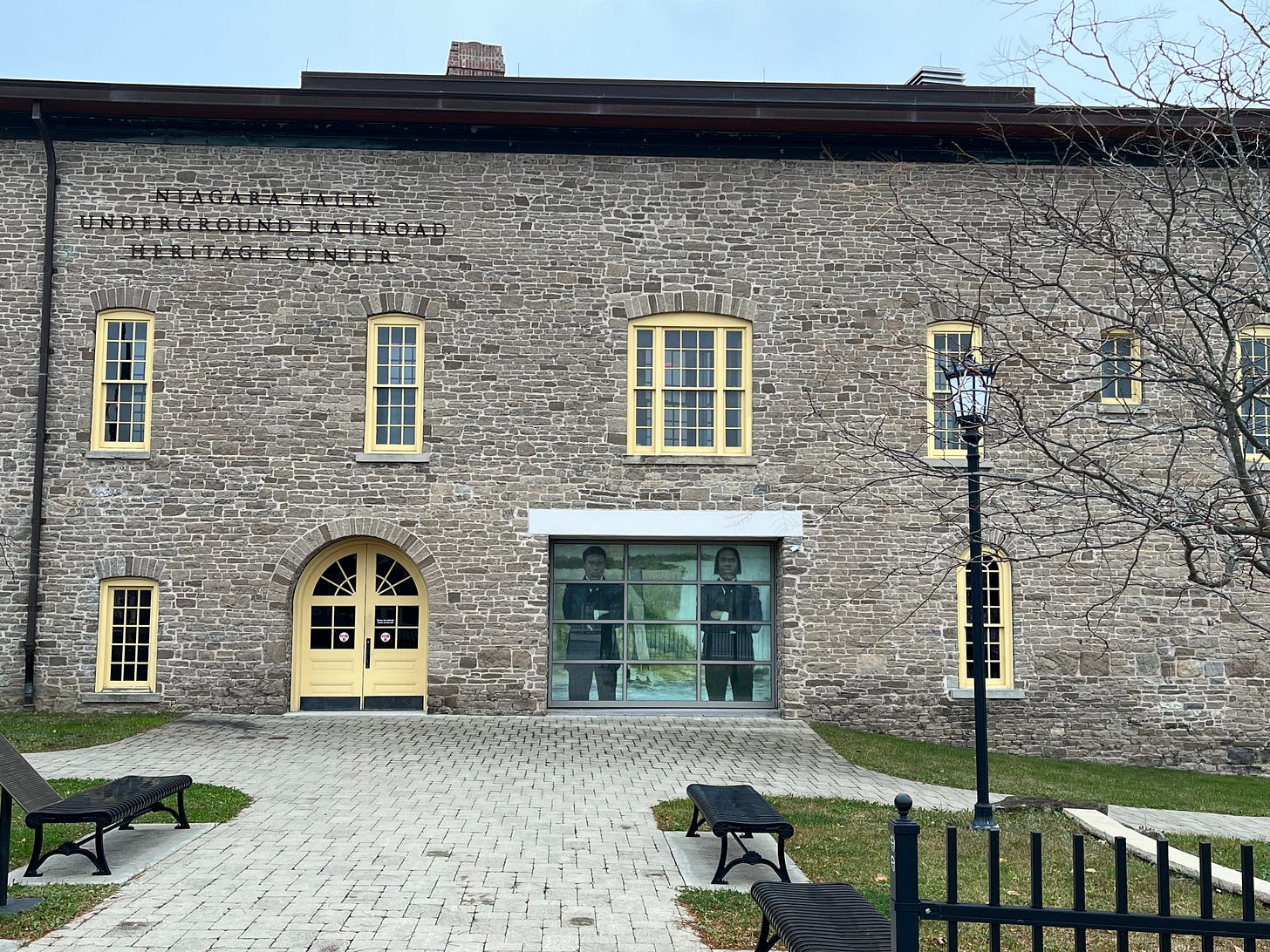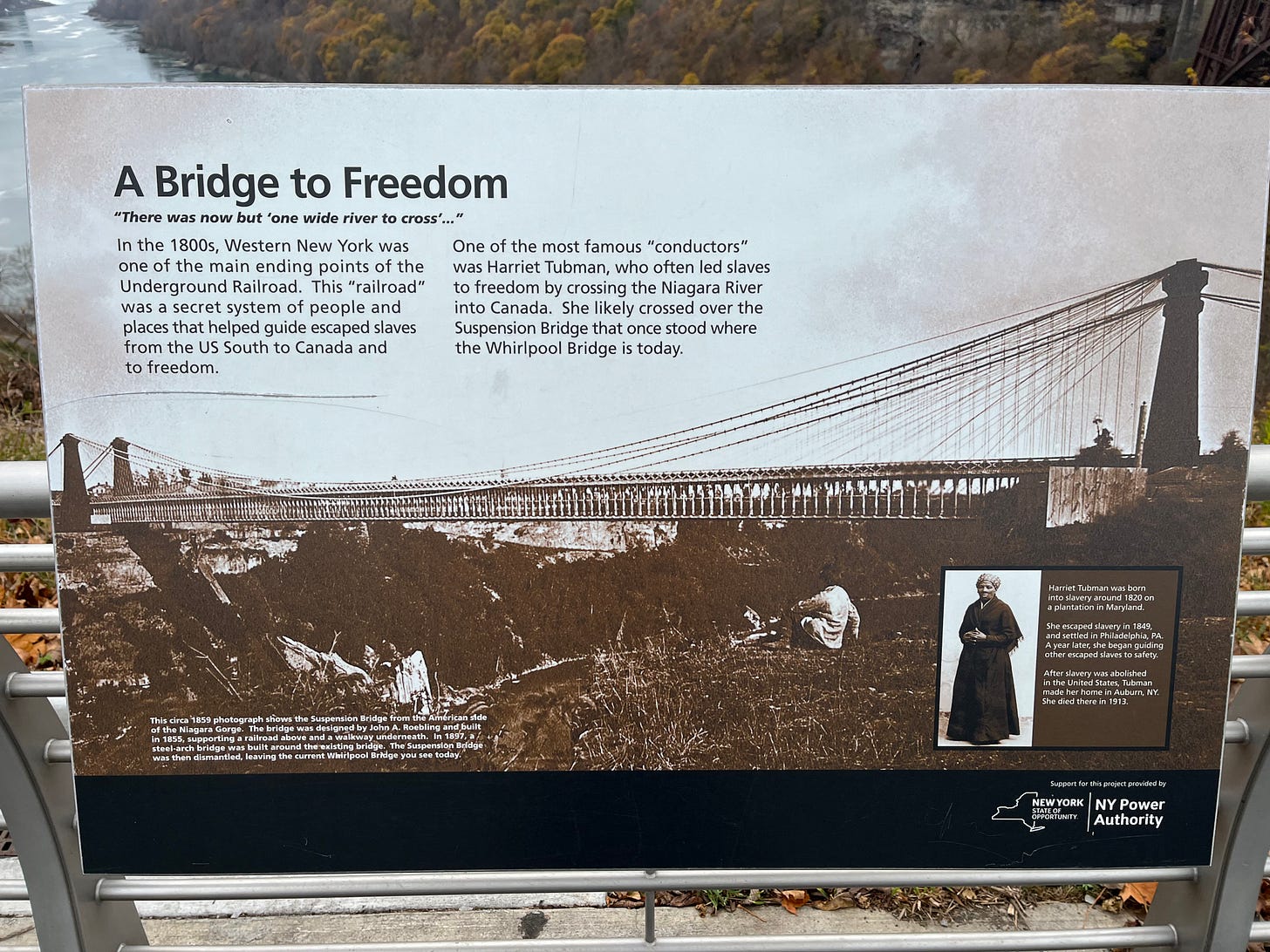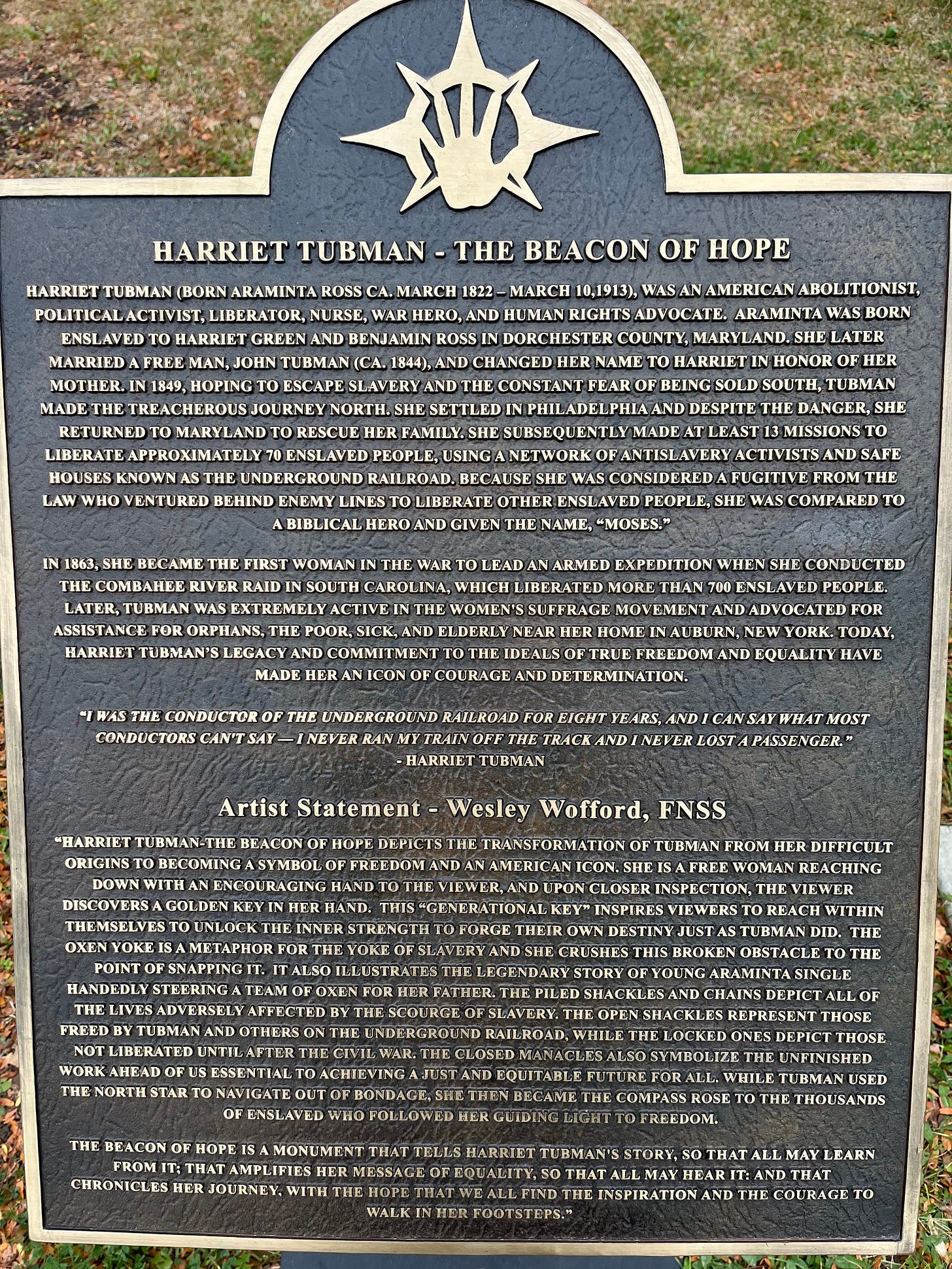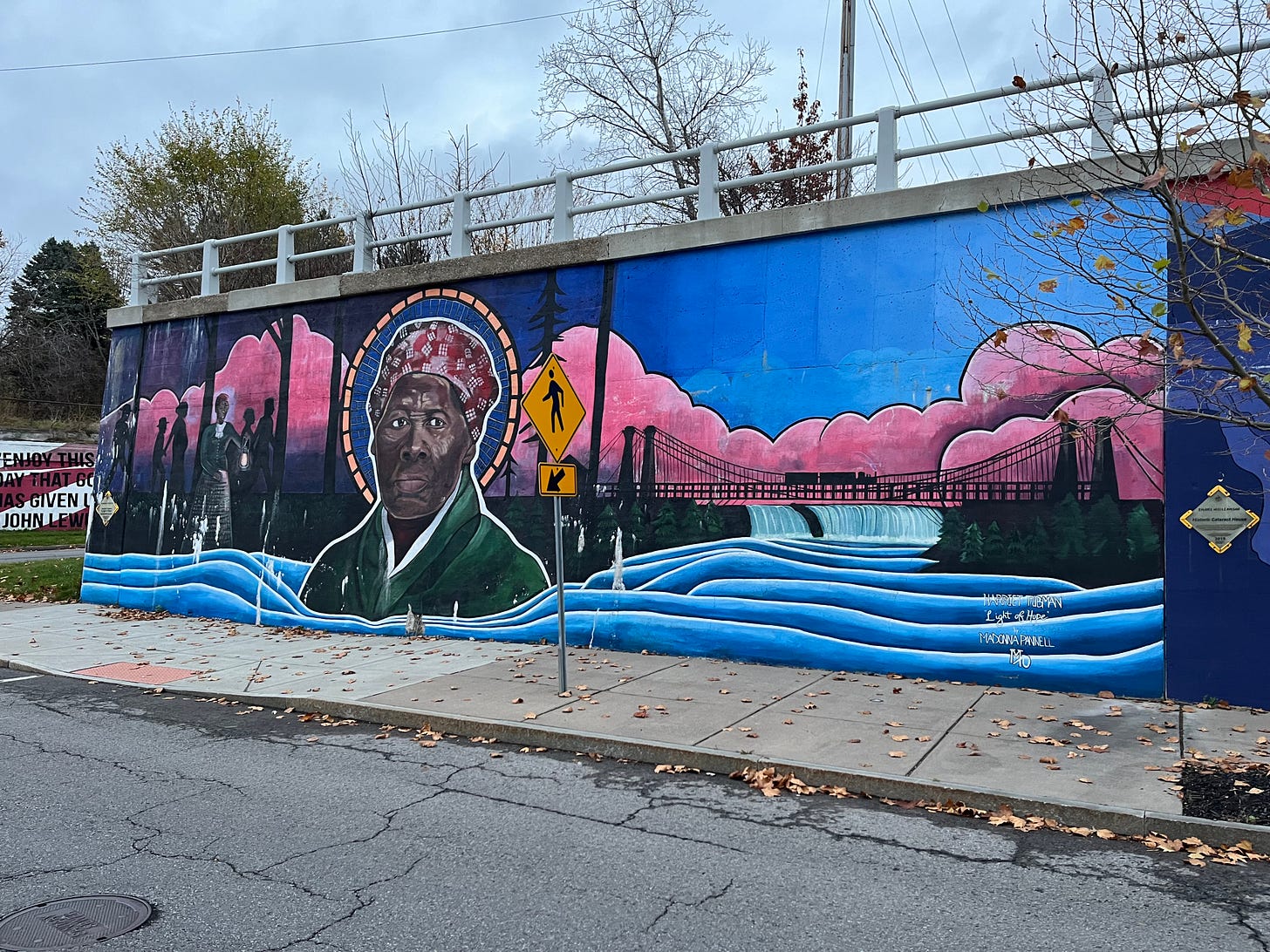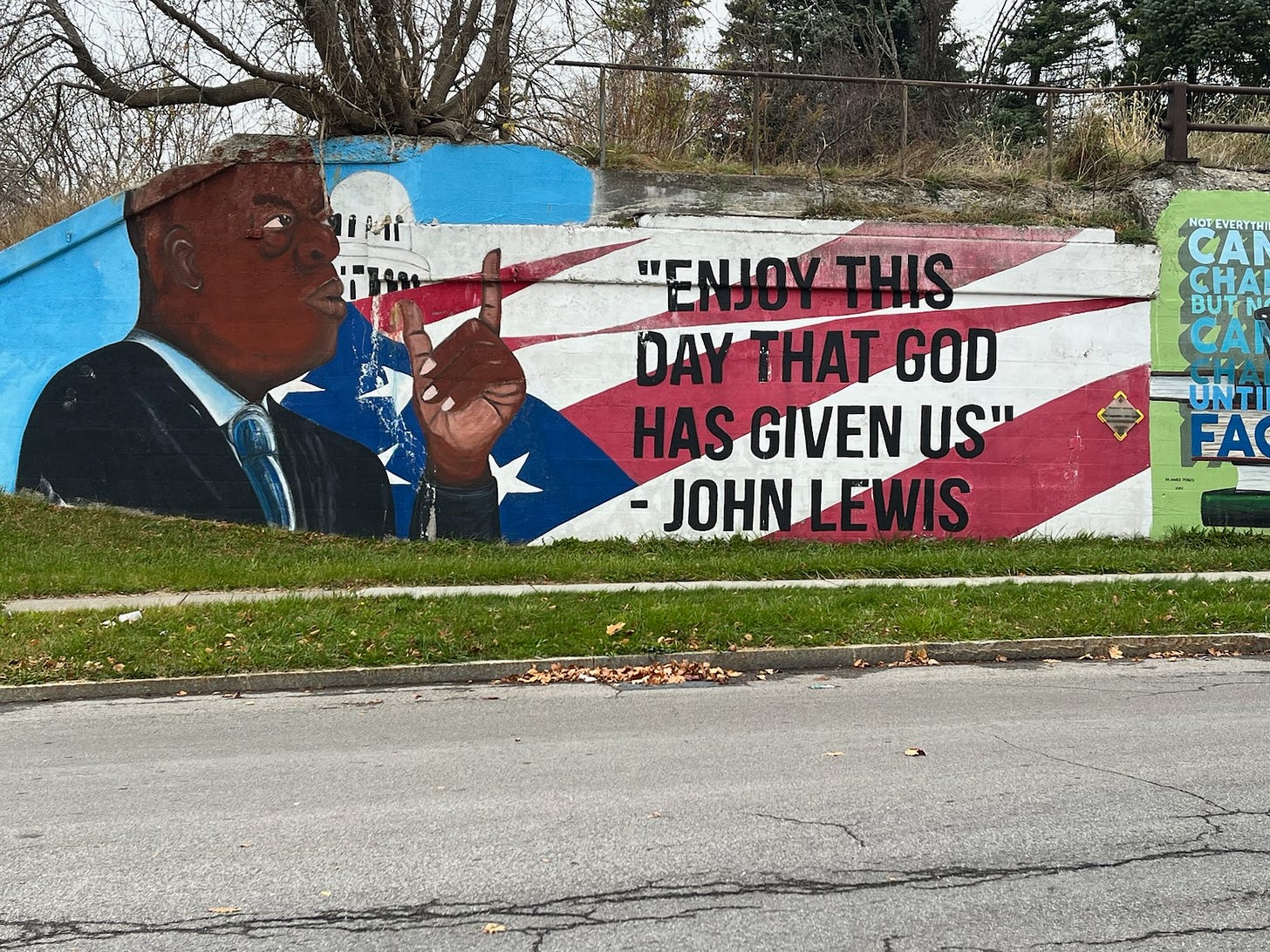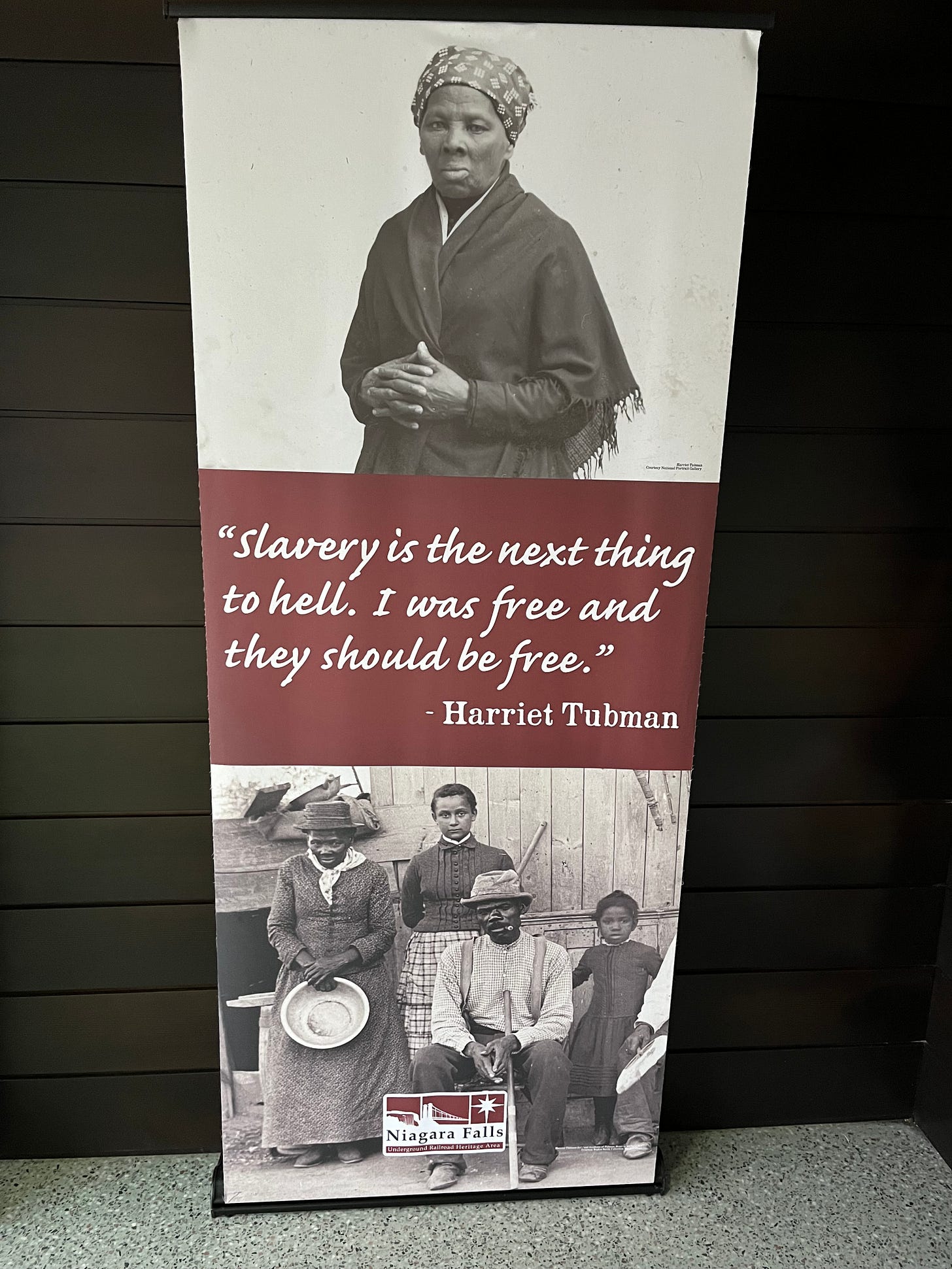The Underground Railroad Heritage Center
I was the conductor of the Underground Railroad for eight years, and I can say what most conductors can't say - I never ran my train off the track and I never lost a passenger. - Harriet Tubman
In my blog post of November 1, I wrote a book review of Night Flyer: Harriet Tubman and the Faith Dreams of a Free People, by Tiya Miles. At the end of that post, I wrote that I was surprised to find out that the sculpture Harriet Tubman: The Beacon of Hope was on loan and being displayed at The Underground Railroad Heritage Center in Buffalo. I was so moved by the story of Harriet Tubman and intrigued by the sculpture that I decided to make a visit last Friday.
The museum is quite small, nothing compared to the Underground Railroad Freedom Center in Cincinnati. I was able to invest in the entire museum, reading almost all of the display material in a bit more than an hour. Nevertheless, I learned a lot about how Buffalo and the Niagara Falls area was historically significant as the last stop on the Underground Railroad.
Slaves who reached Niagara Falls could cross into Canada by small boat (about eight minutes to cross the river in the mist of Niagara Falls) or later, by the suspension bridge (designed by John A. Roebling!) that was completed in 1855. Artifacts of the deteriorated bridge still exist right outside of the museum. I was surprised at how narrow the river was in that area, maybe just 100 feet across.
When slaves reached Niagara Falls, there was a sophisticated system in place to hide them, on occasion employ them, and ultimately to ferry them to sure safety in Canada. The Fugitive Slave Act of 1850 enabled slaveowners from the southern states to travel north to reclaim escaped slaves, so slaves were never totally safe until they reached the shores of Canada.
The sculpture Harriet Tubman: The Beacon of Hope, is powerful. Harriet, woman of faith, holds the North Star in her right hand. She believed that this was how God gave her the ability to navigate out of bondage. She holds a gold key in her left hand, reaching down to the observer. This “generational key” inspires viewers to reach within themselves to unlock their inner strength to forge their own destiny just as she did. Harriet stands on top of a broken oxen yoke, the metaphor of slavery. She crushes the broken obstacle to the point of snapping it. The yoke is piled on shackles and chains, depicting all of the lives adversely affected by the scourge of slavery. The open shackles represent those freed while the locked ones represent those not liberated until after the Civil War. The closed manacles also symbolize the unfinished work ahead of us, essential to achieving a just and equitable future for all.
I was a bit confused by this sculpture because it is not exactly the same as the one attached to the end of my post of November 1. This traveling sculpture is known as Lady Beacon. In the original, you will note that the adult Harriet is handing the golden key to her younger self. That permanent sculpture resides at the museum of her birthplace in Dorchester County, Maryland.
This is the descriptive plaque that stands in front of the traveling sculpture:
The museum center is housed in the same building as the Amtrak station in Niagara Falls. I was taken by the paintings on the walls below the train tracks. The first is of Harriet and the suspension bridge.
The second one is another one of my heroes and mentors, John Lewis:
Outside of the museum, in the Amtrak station, there are a series of posters that depict the journey on the Underground Railroad. This one says it all:
Harriet Tubman: Civil War Hero. Political Activist. Humanitarian. Philanthropist. Woman of Faith and Courage. Ecowomanist. Beacon of Hope!
It was a long drive to Buffalo and back in one day. Eight hours of driving to spend two hours at the museum. Nevertheless, it was a good and worthwhile trip. I am inspired to walk in the footsteps of Harriet Tubman who was convicted to the belief that freedom is a gift of God to every person!




